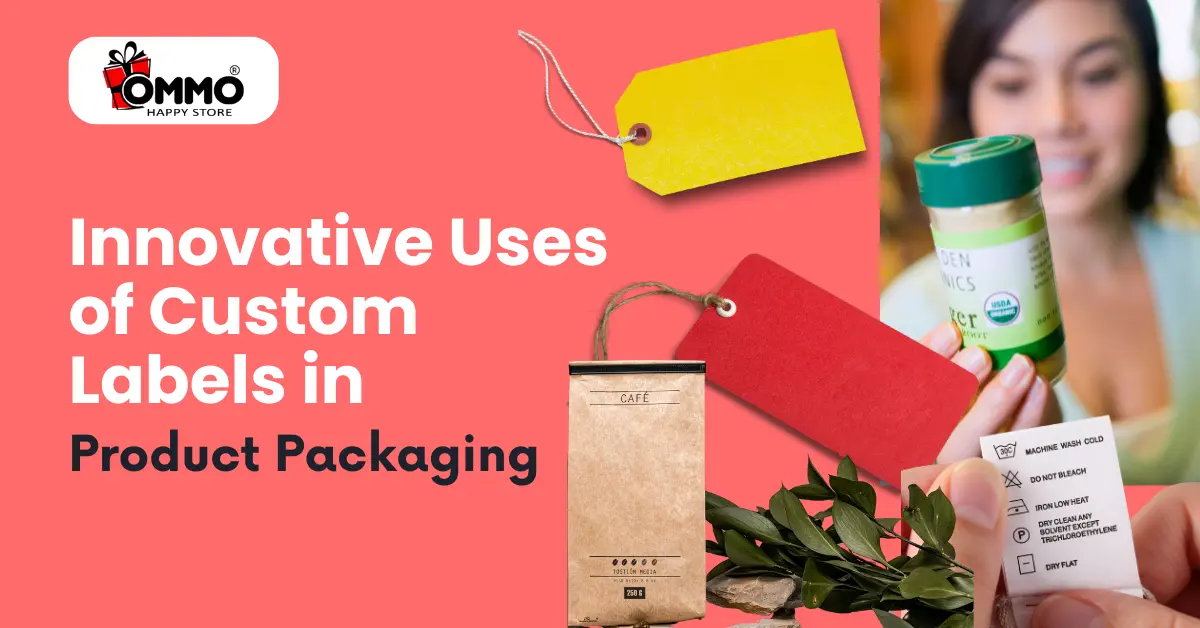Table of Contents
In today’s highly competitive industry, standing out is more important than ever. One of the most successful methods for achieving this is through inventive product packaging. Custom labels are one of the many aspects that may help your packaging stand out.
They are not just useful for supplying information; they can also be used for branding, improving the customer experience, and even encouraging sustainability.
In this blog post, we’ll look at some creative uses for custom labels in product packaging that can help your business make a lasting impression.
Also read: The Ultimate Guide to Designing Eye-Catching Business Cards
Uses of Custom Labels in Product Packaging
1. Enhancing Brand Identity
Custom labels in product packaging are a fantastic way to enhance your brand’s identity. By incorporating your brand’s colors, logo, and unique design elements into your labels, you create a cohesive and recognizable look. This not only helps in building brand awareness but also fosters a sense of trust and loyalty among your customers.
Example: Think of Coca-Cola’s iconic red labels or Apple’s sleek, minimalist packaging. These designs are instantly recognizable and communicate the essence of the brand.
2. Personalization
Personalized labels can make your customers feel special and valued. Whether it’s printing their name on the label or creating limited edition designs for special occasions, personalization can significantly enhance the customer experience.
Example: Nutella’s campaign that allowed customers to have their names printed on the jars was a huge success. It created a personal connection and made the product a perfect gift.
3. Interactive Labels
Interactive labels are an exciting way to engage customers and add value to your product. QR codes, AR experiences, or even simple scratch-off labels can provide additional content, special offers, or fun experiences that go beyond the product itself.
Example: A wine company could include a QR code on their labels that, when scanned, takes the customer to a video tour of the vineyard or offers food pairing suggestions.
4. Eco-Friendly Labels
Sustainability is no longer just a trend; it’s a necessity. Using eco-friendly materials for your labels not only reduces your environmental impact but also appeals to the growing number of eco-conscious consumers.
Example: Brands like Patagonia use recycled paper and vegetable-based inks for their labels, which aligns with their commitment to environmental sustainability and attracts like-minded customers.
5. Tactile and Sensory Labels
Adding a tactile element to your labels can create a memorable and engaging experience. Textures, embossing, or special finishes can make your product stand out on the shelf and encourage customers to pick it up and explore it further.
Example: A skincare brand could use textured labels that mimic the feel of their products, such as a smooth, matte finish for a moisturizing cream or a rough, exfoliating texture for a scrub.
6. Functional Labels
Labels can serve more than just an informational purpose; they can be functional as well. Resealable labels, for example, are practical and add convenience, which can enhance the user experience.
Example: Food packaging with resealable labels helps maintain freshness and makes the product more convenient to use, encouraging repeat purchases.
7. Storytelling
Every brand has a story, and custom labels are a perfect medium to share it. Whether it’s the history of your brand, the origin of the ingredients, or the inspiration behind the product, storytelling can create an emotional connection with your customers.
Example: A coffee company could use its labels to tell the story of the farmers who grew the beans, highlighting fair trade practices and the journey from farm to cup.
8. Limited Edition and Seasonal Labels
Creating limited edition or seasonal labels can create a sense of urgency and exclusivity, encouraging customers to purchase before it’s too late. This strategy is particularly effective during holidays or special events.
Example: Cosmetic brands often release holiday-themed packaging, which not only makes the product feel special but also appeals to customers looking for festive gifts.
Conclusion
Incorporating creative usage of custom labels into your product packaging can greatly increase brand appeal and improve the entire customer experience. The opportunities range from improving business branding and customization to promoting eco-friendly practices and storytelling.
By thinking creatively and strategically about your labels, you may differentiate your items, leave a lasting impression, and generate a loyal customer base.
Remember, in the world of product packaging, it’s the little details that often make the biggest difference. So, take a closer look at your labels and see how you can transform them into powerful tools for your brand’s success.


